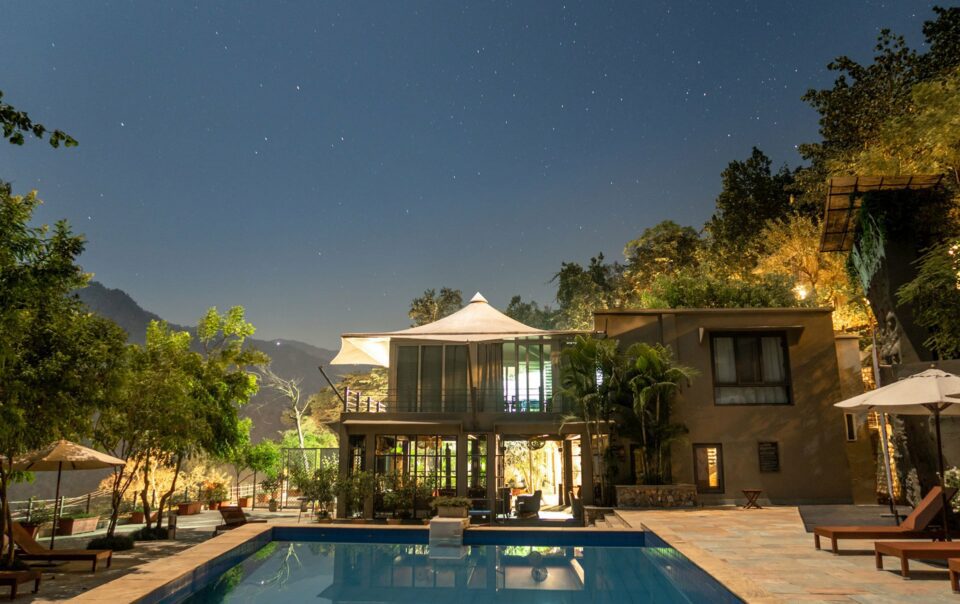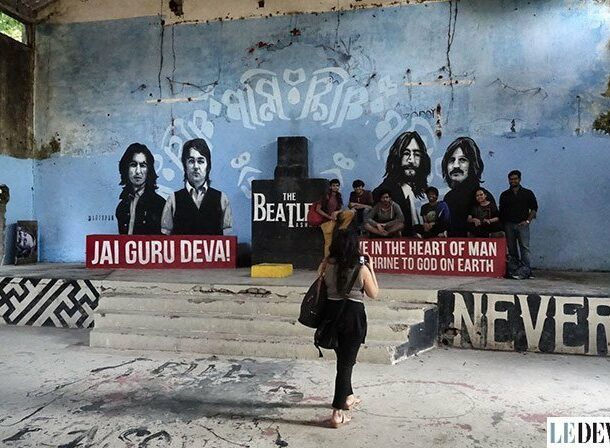
Daily Beast: Inside the Abandoned Beatles Ashram in India
The Beatles all tried to find Nirvana here on their trip to India, as did Mia Farrow and other celebrities. But the ashram turned out a bust, and for decades has been left alone.
– Mona Gable for the Daily Beast
Rishikesh beckons. Nestled in the verdant foothills of the Himalayas, the holy town in north India sparkles like a jewel in the hazy afternoon sky. To get there, I have to cross a narrow suspension bridge called Lakshman Jhula. It sways above the sacred jade waters of the Ganges, which is believed to wash away all sins.
As I step onto the bridge, it feels like all of humanity has converged here. The pathway is jammed with motorbikes, seekers, tourists, backpackers and yogis, sadhus in saffron robes. Cows amble toward me. Monkeys stare. Men spit. On the opposite side, ashrams and temples hug the river where worshippers pray, chant, and bathe. With their bright colors and fanciful shapes, they look like something a child would create.
For decades the ashram was abandoned, its gates shuttered, its forest grounds unkempt. Fans and lovers occasionally stole in to scrawl their names in the empty buildings. Then, a few years ago, inspired by the rise in ecotourism, the property inside Rajaji National Park was reopened to visitors. A small café was added, and a gallery to showcase photography of the Beatles’ 1968 visit.
I did not know where the ashram was, and had no address. So Sunita, a river guide at Atali Ganga, the stunning eco-lodge where I stayed, agreed to take me.
As we make our way through the narrow lanes, we weave around stray dogs, blaring taxis and knots of tourists. We pass cafés, ashrams teaching yoga classes and meditation, centers offering Ayurvedic healing.
Staying @ Atali Ganga
Our property is an oasis surrounded by Reserved Forest, and it is a thorough privilege to be so close to nature. If you book, come with the purpose of living in the valley of India’s holiest life force, the Ganga, for the call of the barking deer, or the midnight roar of the leopard ; and for that lovely dull ache after a busy day in the great outdoors. 80% of the property is built on a hillside, and you will have to walk a series of steps to reach your cottage. If your group includes infants, small kids and infirm elders, do request for cottages closer to the Cafe´.
> Learn MoreGet in Touch
Address: Milestone 30, Badrinath Road, Rishikesh, Uttarakhand, India
Mobile: +91-7060072708
Email: bookings@ataliganga.comAwards won by Atali



